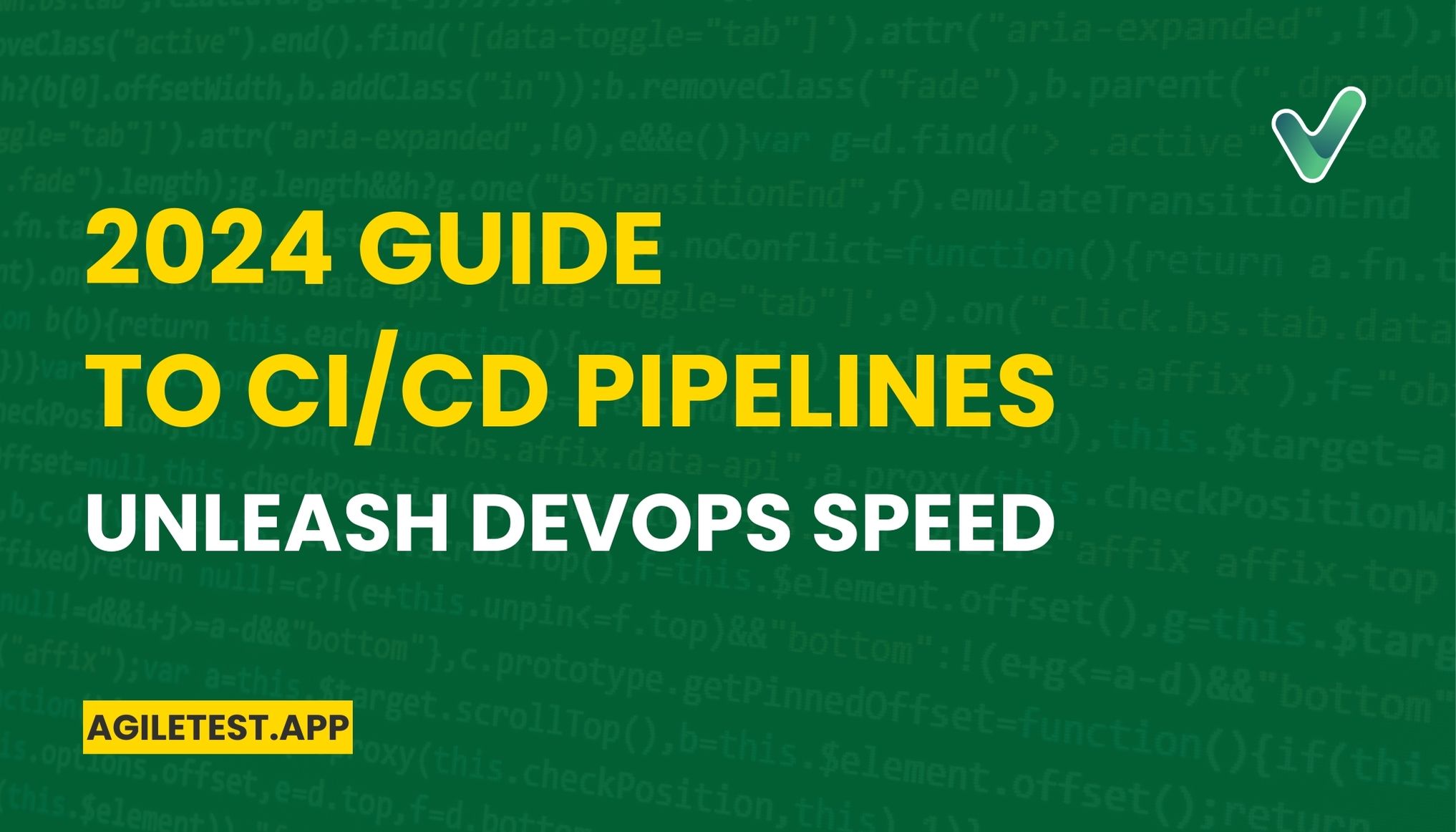The pressure is on for software development teams! They need to deliver high-quality features quickly. CI/CD pipelines are the answer. These automated workflows make the software development process more efficient by concentrating on two crucial areas: continuous integration (CI) and continuous delivery (CD). Key tools for building these pipelines include Jenkins, Azure, and GitLab.
What is CI CD Pipeline
A CI CD (Continuous Integration/Continuous Deployment) pipeline helps streamline software development by automating key stages. It includes building, testing, and deploying code. By handling repetitive tasks, the pipeline significantly enhances software quality. As a result, it also speeds up delivery times while effectively reducing human errors.
Developers incorporate tools for code compilation, testing, security checks, and deployment in CI CD pipelines. In addition, these pipelines are crucial for implementing DevOps practices. They promote efficient collaboration between development and operations teams, thereby accelerating the release of software updates.
→ Related content: CI/CD and DevOps
A Jenkins CI CD Pipeline Tutorial
What is Jenkins?
Modern software development requires balancing speed and quality. Developers aim to deliver features quickly while keeping code bug-free. Thus, using Jenkins, an open-source automation server, helps alleviate this pressure.
Jenkins automates essential tasks like building, testing, and deploying code, known as continuous integration (CI) and continuous delivery (CD). This automation allows for frequent code updates, thorough testing, and rapid deployments. As a result, Jenkins ensures consistent and reliable software releases, enabling developers to focus on more critical tasks. Consequently, teams can apply their expertise to creating high-quality code, leading to faster feature releases with fewer bugs and a notable increase in overall development efficiency.
Developers can leverage features like build automation, automated testing, and deployment automation. Additionally, Jenkins offers pipeline creation and a vast plugin ecosystem for customization.
Building a Jenkins CI CD Pipeline
Step 1: Download and Install Jenkins
Ensure Java is installed.
Download the Jenkins ‘war’ file from the official Jenkins website.
Run the ‘war’ file using the command: java -jar jenkins.war.
Step 2: Start and Configure Jenkins
Access Jenkins via browser at http://localhost:8080.
Follow the setup wizard, enter the admin password, and install suggested plugins.
Create the first admin user and confirm the Jenkins URL.
Step 3: Create CI/CD Pipeline in Jenkins
In Jenkins dashboard, click New Item, name it, and select Pipeline.
Define the pipeline script either directly or from a Jenkins file.
Save and run the pipeline to see the build history and console output.
Why Every Dev Needs an Azure CI CD Pipeline
What is Azure Pipeline?
Imagine building and running your apps anywhere in the world, without worrying about servers. Hence, that is the power of Azure, Microsoft’s cloud platform. It gives you everything you need – computing power, storage, and connections – all in one place. Plus, Azure works with the tools and languages you already know, so there’s no steep learning curve.
Azure DevOps empowers development teams to streamline their lifecycle and accelerate feature delivery through Azure Pipelines. Ultimately, this integrated solution automates critical tasks like code building, comprehensive testing, and seamless deployment. Freed from these repetitive processes, development teams can dedicate their expertise to crafting innovative applications. Additionally, its integration with multiple tools and platforms enhances collaboration and streamlines workflows across development teams.
Before you jump in, there are a few things to keep in mind:
- Free GitHub Account: You’ll need this to store your code.
- Free Azure DevOps Organization: Just sign up and you are ready to go!
- Some Extra Permissions: If you are working on an existing project, you might need some extra permissions.
- Optional: Run Pipelines in the Cloud: For some advanced features, you might need additional resources (either purchase them or request a free trial).
→ Related content: Do You Know Test Automation
Create Azure Pipeline with Java
- Copy the sample code repository from GitHub: https://github.com/MicrosoftDocs/pipelines-java.
- Sign in to your Azure DevOps organization and navigate to your project.
- Go to Pipelines and select “New pipeline” or “Create pipeline”
- Choose GitHub as the source and sign in if required.
- Select your repository from the list.
- Approve and install the Azure Pipelines app if prompted.
- Azure Pipelines will recommend the Maven pipeline template based on your repository.
- Review the YAML file and select “Save and run”
- Commit the azure-pipelines.yml file to your repository and run it.
- To modify the pipeline, select it on the Pipelines page and edit the azure-pipelines.yml file.
→ Related content: Test Automation Frameworks
Boost Efficiency with GitLab CI CD Pipeline
What is GitLab?
Forget just a Git repository manager! GitLab offers a comprehensive DevOps platform that seamlessly integrates CI/CD pipelines and robust development tools. With that being said, this powerful platform streamlines project management by automating builds, running tests efficiently, and deploying code effortlessly.
By centralizing functionalities, GitLab fosters exceptional collaboration and significantly boosts team efficiency. It provides more than just automation by offering valuable features like issue tracking, code reviews, and project management tools. This all-in-one solution simplifies and enhances the entire software development and deployment lifecycle, ensuring streamlined and efficient workflows. Thus, quality is crucial! This continuous cycle helps identify bugs early in development. GitLab CI/CD ensures that only code meeting your standards reaches production, maintaining high-quality outputs.
Initialize the GitLab CI CD Pipeline
Step 1: Create a .gitlab-ci.yml file
To use GitLab CI CD, begin by creating a .gitlab-ci.yml file at the root of your project. This YAML file outlines the stages, jobs, and scripts for your CI/CD pipeline, using its custom syntax.
In this file, you define variables and job dependencies and specify the execution conditions for each job.
While you can name this file anything, .gitlab-ci.yml is the standard name, commonly referenced in product documentation as the CI/CD configuration file.
Step 2: Find or Create Runners
Runners are agents that execute your jobs, either on physical machines or virtual instances. In the .gitlab-ci.yml file, you can specify a container image for the job. The runner loads this image, clones your project, and runs the job locally or in the container.
For GitLab.com users, runners on Linux, Windows, and macOS are readily available, and you can also register your own runners. For self-managed instances, you can register runners or create a runner on your local machine.
Step 3: Define Your Pipelines
In the .gitlab-ci.yml file, you define your pipeline, which runs on a runner. A pipeline consists of stages and jobs.
- Stages: Specify the order of execution, typically including stages like build, test, and deploy.
- Jobs: Define the tasks within each stage, such as compiling or testing code.
Pipelines can be triggered by events like commits, merges, or on a schedule. You can also integrate various tools and platforms within your pipeline.
Step 4: Use CI/CD Variables as Part of Jobs
GitLab CI/CD variables are key-value pairs used to store and pass configuration settings and sensitive information to jobs in a pipeline. These variables can customize jobs by making values defined elsewhere accessible.
You can hard-code variables in the .gitlab-ci.yml file, set them in project settings, or generate them dynamically. Variables can be defined for the project, group, or instance.
There are two types of variables:
- Custom Variables: User-defined and managed in the GitLab UI, API, or configuration files.
- Predefined Variables: Automatically set by GitLab, providing information about the current job, pipeline, and environment.
Variables can be marked as “protected” (available to jobs on protected branches/tags) or “masked” (values hidden in job logs for security).
Step 5: Use CI/CD Components
A CI/CD component is a reusable unit of pipeline configuration. You can use it to build an entire pipeline or just a part of it. To add a component, use include:component in your pipeline configuration.
Therefore, reusable components help reduce duplication, improve maintainability, and ensure consistency across projects. Create a component project and publish it to the CI/CD Catalog to share it across multiple projects.
Additionally, GitLab offers CI/CD component templates for common tasks and integrations, streamlining the setup process.
Conclusion
In conclusion, the pressure to deliver high-quality software quickly is a constant challenge for development teams. CI/CD pipelines offer a powerful solution by automating key tasks throughout the development lifecycle. Want to deliver high-quality software faster? CI/CD pipelines are your answer! This guide explored popular options like Jenkins, Azure Pipelines, and GitLab CI/CD. These tools automate key tasks, streamlining your development process. Embrace CI/CD to boost your team’s efficiency, software quality, and delivery speed. Choose the right fit and unlock the power of DevOps!
Try test automation with AgileTest: Marketplace




